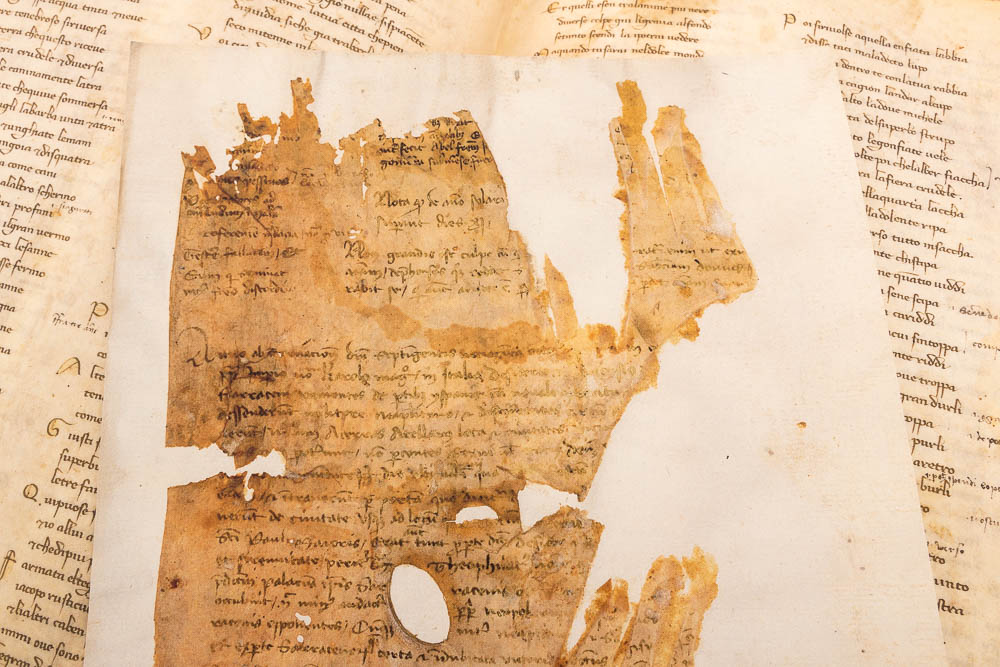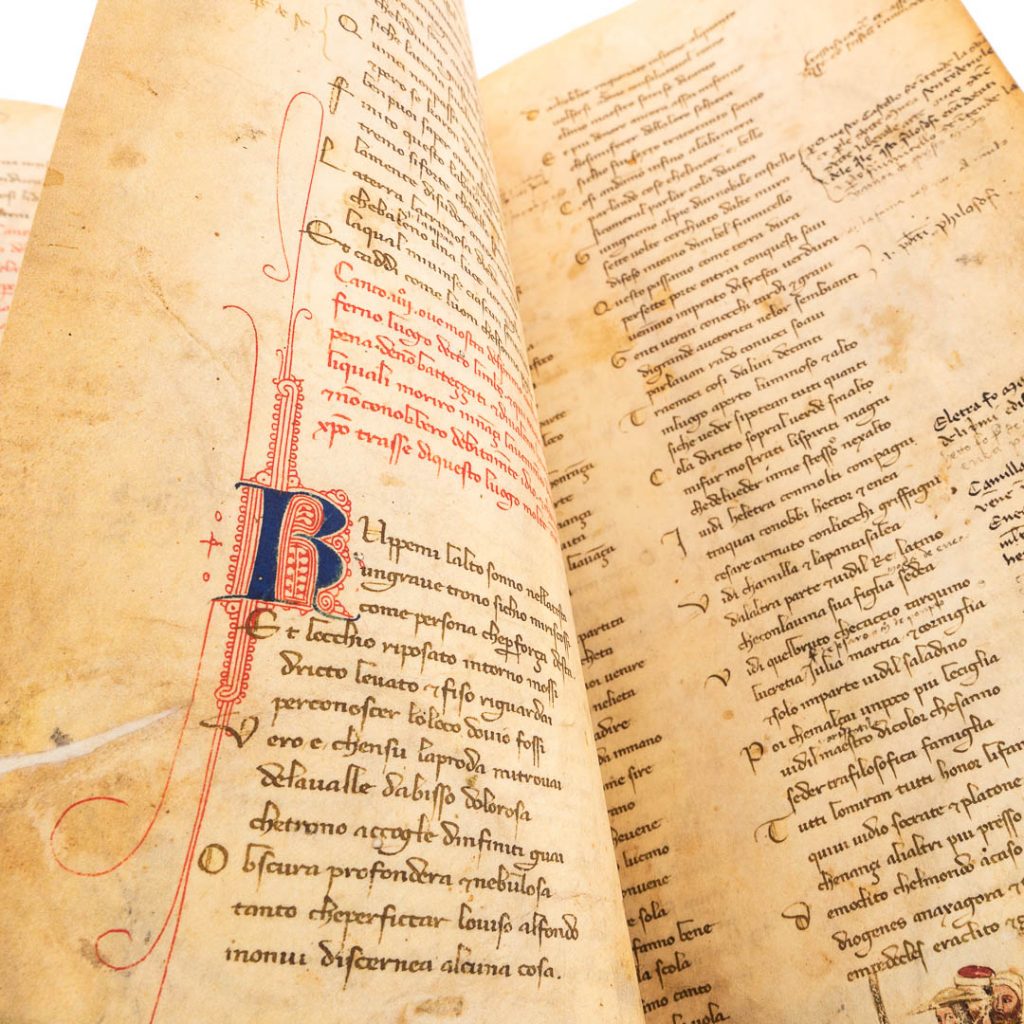Not only does this splendidly decorated manuscript contain forty-nine illuminations created under the guidance of Pacino di Bonaguida. It also features commentaries by illustrious contemporary intellectuals, among which is a poem attributed to Boccaccio. Scroll down to see the video!
Thanks to a 2019 limited edition by Imago publisher, 300 full-size facsimile copies of this jem are now available.
Only a few decades after Dante’s death, the Divine Comedy had already become a publishing success, with dozens of skillful artists depicting his work in richly decorated manuscripts.

If you were to visit the Laurentian Library, one of the most ancient in Florence, you would have the chance to admire Strozzi 152, presumably one of the first manuscripts of the Comedy to be illustrated canto by canto.
The forty-nine lavish illuminations adorning the bottom of the folios were crafted between 1335 and 1345 by various Florentine artists under the guidance of Pacino di Buonaguida, an outstanding painter whose style was influenced by none other than Giotto.
Pacino was active in Florence from 1302 to 1347, and recent studies have confirmed that in his workshop many manuscripts of the Divine Comedy were produced between 1330 and 1350.
The manuscript includes commentaries by prominent contemporary intellectuals such as Jacopo della Lana and Jacopo Alighieri, as well as a poem attributed to Boccaccio.
Tracing the ownership history of Strozzi 152 is not an easy task — in 1846 bibliographer Colomb de Batines stated that in its earliest days the manuscript included noble coats of arms, now partially rubbed off.

Nonetheless, no doubts remain about the unparalleled success of Dante’s work in the 14th century. Some of the most valuable features of Strozzi 152 are commentaries by prominent contemporary intellectuals such as Jacopo della Lana, Bosone da Gubbio and Dante’s son Jacopo Alighieri. F. 92v. even contains a poem (a carmen on Castel dell’Ovo) attributed to Boccaccio.
According to historians, the artwork in Strozzi 152 bears significant similarities with medieval chivalric literature. The technique of continuous narrative allows readers to follow Dante’s journey through the underworld — illustrations are thus not merely decorative, but rather essential for conveying content.
Pacino himself decorated the initials of the first two canticas, while the initials of the cantos contain aniconic symbols such as arabesques and volutes. The canticas’ initials, decorated with colored leaves, include illustrations of Dante and Virgil, Dante and Virgil in the boat, Dante kneeling and Beatrice pointing to the sky. The illuminations adorning the beginning of each canto resemble those included in manuscripts by Francesco da Barberino.
The illustrations of the Inferno are outlined in ink and painted with watercolor by an anonymous Florentine artist whose style is strikingly similar to that of the artist who painted the tryptic discovered in the Czech castle of Konopiště, now stored in the National Gallery in Prague.
According to historians, the artwork in Strozzi 152 bears significant similarities with medieval chivalric literature.
The text is written by an anonymous copyist in lettre bâtarde, and at least three hands have affixed the footnotes both in Latin and vernacular.
The shelfmark owes its name to Senator Carlo Strozzi, whose collection was acquired by the Laurentian Library in 1785. Partly designed by Michelangelo, the library boasts a collection of nearly 11,000 manuscripts.
If you cannot make your way to Florence but want to leaf through a full-size color reproduction of this Divine Comedy, check out the facsimile edition by Imago publisher.






